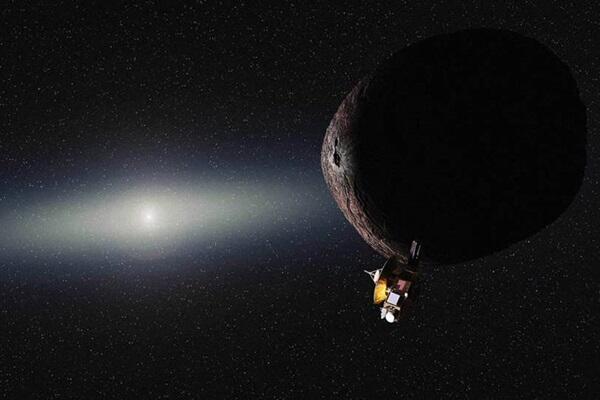It seems like just yesterday New Horizons was sending back images of Pluto after its groundbreaking fly by. Now, the spacecraft is getting closer to its new mission every day, and at midnight (UTC) on April 3 it hit a new milestone.
New Horizons has traveled 486.19 million miles (782.45 million kilometers), which is the halfway point between Pluto and it’s next mission.
New Horizons is scheduled to fly by Kuiper Belt object 2014 MU69 on January 1, 2019, which will set the record for “most distant world ever explored in the history of civilization,” according to Alan Stern, the New Horizons principal investigator.
MU69 is a classical Kuiper Belt object, which means it is low-eccentricty and it orbits Neptune without any orbital resonance to Neptune. It was discovered by the Hubble Space Telescope in June of 2014 and was selected as the team target by the New Horizons team in August of 2015. Details of MU69 are hard to see, even with the Hubble, but it’s estimated that the object is less than 30 miles (45 kilometers) across.
New Horizons project scientist Hal Weaver from APL, in Laurel, Maryland, said this next fly by will be the next big thing.
“The January 2019 MU69 flyby is the next big event for us, but New Horizons is truly a mission to more broadly explore the Kuiper Belt,” Weaver said in a press release. “In addition to MU69, we plan to study more than two-dozen other KBOs in the distance and measure the charged particle and dust environment all the way across the Kuiper Belt.”
After two and a half years of constant data collection, the spacecraft will be getting a much-needed break later this week as it enters into a 157-day hibernation on April 7. The hibernation will begin just two hours before another milestone for New Horizons: reaching the halfway point between closest approaches to Pluto and MU69.
At 3.5 billion miles (5.7 billion kilometers), New Horizons is still operating normally and is ready for the next big fly by.
Source: http://bit.ly/2n9uNit











